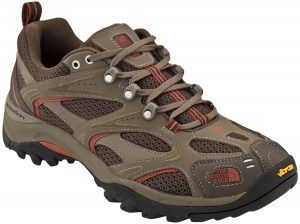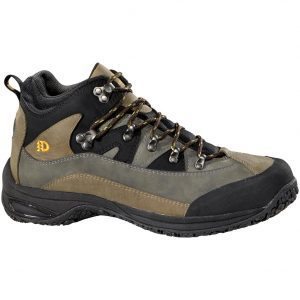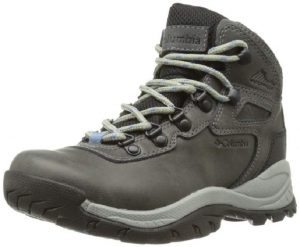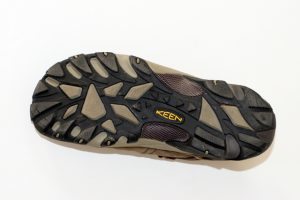Background
Imagine, for a moment, that you are deep in the mountains and far from your destination. Your “water proof” boots are saturated with water, you are nearing exhaustion, the path before you is a minefield of roots and rocks, and you have no provisions to make camp.
This scenario is what I faced in 2012 while hiking in West Virginia. Each step became a labored experience due to the weight strapped to my feet. The equipment that is supposed to be providing me safe support instead is becoming the instrument of near failure. Roots became trip hazards due to the added water weight in each boot and the stones silently waited patiently for the opportunity to cause me to roll my ankle and fall.
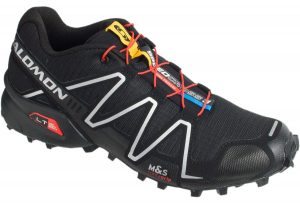
While growing up, I was always barefoot or wearing sneakers. I never liked the feel of high-tops, boots, roller blades etc. I always felt they limited my agility and speed. When I began venturing off of the pavement and into the woods, it was my understanding that boots were the only option. I purchased a pair of hiking boots and started wearing them around the house and for small walks to begin getting used to them.
I found that my ankle would usually feel a little bit stiffer, but I decided to start hiking with them anyway. The first few hikes were very short. 3-5 miles was about all I could muster with boots. It was a strange sensation walking around with heavier feet and stiff ankles, but my wise friends all reassured me I would get used to them. I never did, and after the events in the first paragraph came to a conclusion, I made the decision to find other options.
I started asking long distance hikers what boots they wear. I was looking for lighter weight and boots which allowed more flexing of the ankle. Nearly all told me to buy hiking shoes, and with my new found knowledge, I went back out with boots again. Before I completed my first mile, I rolled my ankle and had to abort the hike. Could the argument be made that the boots protected me from a healthy sprain? Yes. However, I believe it would never have happened if I did not have the boots.
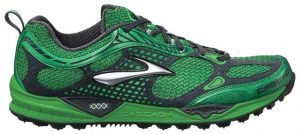
I purchased my first pair of hiking shoes and set out on another 3-5 mile hike. After the hike, I realized my feet and ankles were not sore or stiff. My feet were not sweaty and clammy. And, most importantly, I was able to traverse the landscape faster and without tripping or rolling my ankle.
In fact, I switched to the shoes nearly 2 years ago and I have never fallen, never twisted an ankle, and my feet dry quickly after water crossings. I am no doctor, but I would imagine the boots prevented the natural flexing my ankles would do naturally with shoes and that is why I was more clumsy walking through terrain with boots. From a utility standpoint, boots absolutely serve a purpose. If I am carrying 80-100 pounds on my back up a mountain, I would want to rely on the additional support that boots would provide.
Differences
Many manufactures have already moved away from the standard old-school boot. Boots with too high of a profile heel are going to cause some rolling of the ankle despite the added support of the upper to support that ankle. To reduce the probability of this happening, make sure your military issue boots fit the terrain you’re going to hike on. Civilian boots should meet the same criteria.
I’m not adverse to trying boots but I prefer shoes. Here are a few things you should keep in mind if you go for a boot or shoe: First, buy a boot or shoe that matches the kind of walking you’re going to do. Why buy backpacking boots if you’re only going to be hiking? That’s a bit of overkill on your feet, so instead look at buying hiking shoes or hiking boots. There are many good trail running shoes that break ranks and could be called a hiking shoe because they tend to have a larger profile. Many trail running shoe break ranks and could be called a hiking shoe.
Second, make sure you have some type of aggressive multidirectional lugs. Lugs are the bumps on the outsole of a good boot or shoe and it gives the footwear traction. For mountaineering or backpacking try looking for thicker lugs because these are going to improve your grip. The wider the lugs or the more they are spaced apart will mean you can get good traction, Wider lugs also mean shedding mud easier and not getting debris caught in between them, such as stones, twigs, or branches. The image below shows another trail running shoe that can be used as a hiking shoe for short hikes.
Third, I recommend not buying online and instead going into a store with a good selection of outdoors footwear. You want to get a good fit. Keep these things in mind:
1. Low-cut shoes: These won’t give you the same roll-resistance needed to protect your ankles as boots do however they are good for lightweight travel. If you are carrying a light load and short-hikes get a pair if you need protection from debris, but aren’t going into aggressive terrain. These are the type that I prefer. Look for trail running shoes. They will be about half the weight of a boot. Some have a stiff medial shank built into the outsole to prevent twist and some do not. Find a shoe that is comfortable for you and the environment you are going into. Hiking shoes are more supportive than a trail-running shoe and lighter than a hiking boot.
2. Mid-cut boot: A moderate load on your back and a multi-day trip could mean your ankles are fatigued. Try something with a bit more material for ankle protection from the debris and also for added ankle-support. A wider outsole and lugs are good supportive parts of the shoe that are good for longer hikes when you get fatigued and help to prevent roll.
3. High-cut boots: If you’re going into rough terrain try and look for boots with good ankle support. These are also recommended for loads of 40 pounds+ or more. I like a boot with a pliable upper, and overall is not too stiff because it brings discomfort and can have added weight. I like to select something that protects against rocks, scree, and roots. Again, look for aggressive lug traction underneath. Hiking boot. Some hiking boots can have excessive weight. Look for boots that are comfortable. Boots should have a semi-pliable upper and give adequate protection from the elements. These boots have generous padding inside and are flexible.
Look for aggressive multidirectional lugs. Lugs are the bumps on the outsole of a good boot or shoe and it gives the footwear traction. For mountaineering or backpacking try looking for thicker lugs because these are going to improve your grip. The wider the lugs or the more they are spaced apart will mean you can get good traction, Wider lugs also mean shedding mud easier and not getting debris caught in between them, such as stones, twigs, or branches.
With any battle, both sides will try to scout the enemy to see what threat they bring. They do this so they can prepare an appropriate defense to minimize losses. I believe the same tactics should be employed in our own lives and be willing to adapt as needed. With hiking, I prepare my primary gear for the area I will be hiking. To mitigate any injuries, I chose appropriate footwear for my needs. In my case, it will always be shoes over boots because they provide me with the best benefits. I encourage you to consider trying shoes to hike in. Keep your mind flexible with a willingness to change course. After all, isn’t that one of the concepts Spotter Up promotes?
*The views and opinions expressed on this website are solely those of the original authors and contributors. These views and opinions do not necessarily represent those of Spotter Up Magazine, the administrative staff, and/or any/all contributors to this site.


